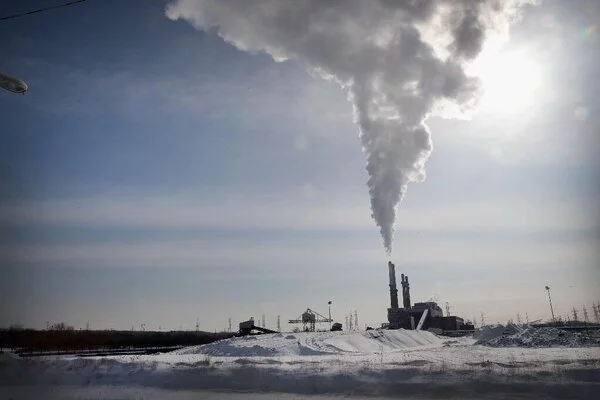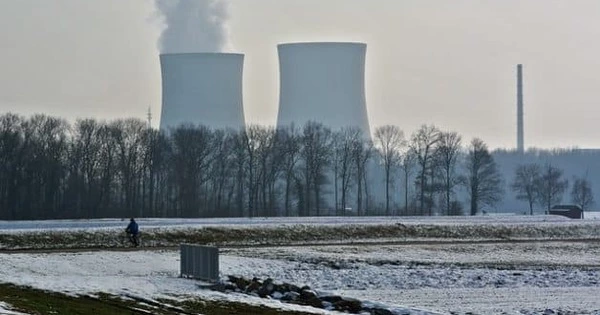Nuclear power generates nearly 20% of the electricity in the United States today. The United States has the world’s largest nuclear fleet, with 92 reactors spread across the country. Many of these power plants have been in operation for more than 50 years and are nearing the end of their useful lives.
Policymakers are debating whether to retire the aging reactors or reinforce their structures so that nuclear energy can continue to be produced, which many see as a low-carbon alternative to climate-warming coal, oil, and natural gas.
According to MIT researchers, there is another factor to consider when weighing the future of nuclear power: air quality. Nuclear power, in addition to being a low-carbon source, produces relatively little air pollution. How would the pattern of air pollution change in the absence of nuclear power, and who would be affected?
In a new study published in Nature Energy, the MIT team addressed these concerns. They lay out a scenario in which every nuclear power plant in the country is shut down and consider how other energy sources such as coal, natural gas, and renewable energy would meet the resulting energy needs for an entire year.
This adds another layer to the environmental health and social impacts equation when thinking about nuclear shutdowns, where the conversation often focuses on local risks due to accidents and mining or long-term climate impacts.
Lyssa Freese
Their analysis shows that air pollution would increase as coal, gas, and oil sources ramped up to compensate for the absence of nuclear power. This may not be surprising in and of itself, but the team has put numbers to the prediction, estimating that an increase in air pollution would have serious health consequences, resulting in an additional 5,200 pollution-related deaths in a single year.
However, if more renewable energy sources become available to supply the energy grid, as is expected by 2030, air pollution will be reduced, albeit not entirely. Even under this more optimistic renewable scenario, the team discovered a slight increase in air pollution in some parts of the country, resulting in 260 pollution-related deaths over a year.
When they examined the populations directly affected by the increased pollution, they discovered that Black or African American communities, a disproportionate number of whom live near fossil-fuel plants, were the most vulnerable.
“This adds another layer to the environmental health and social impacts equation when thinking about nuclear shutdowns, where the conversation often focuses on local risks due to accidents and mining or long-term climate impacts,” says lead author Lyssa Freese, a graduate student in MIT’s Department of Earth, Atmospheric, and Planetary Sciences (EAPS).
“In the debate over keeping nuclear power plants open, air quality has not been a focus of that discussion,” adds study author Noelle Selin, a professor in MIT’s Institute for Data, Systems, and Society (IDSS) and EAPS. “What we found was that air pollution from fossil fuel plants is so damaging, that anything that increases it, such as a nuclear shutdown, is going to have substantial impacts, and for some people more than others.”

Future phase-outs
When nuclear power plants closed in the past, fossil fuel use increased in response. In 1985, the closure of reactors in Tennessee Valley prompted a spike in coal use, while the 2012 shutdown of a plant in California led to an increase in natural gas. In Germany, where nuclear power has almost completely been phased out, coal-fired power increased initially to fill the gap.
Noting these trends, the MIT team wondered how the U.S. energy grid would respond if nuclear power were completely phased out.
“We wanted to think about what future changes were expected in the energy grid,” Freese says. “We knew that coal use was declining, and there was a lot of work already looking at the impact of what that would have on air quality. But no one had looked at air quality and nuclear power, which we also noticed was on the decline.”
The team used Jenn’s energy grid dispatch model in the new study to assess how the US energy system would respond to a nuclear power shutdown. The model simulates the output of every power plant in the country and runs continuously to estimate the energy demand in 64 regions across the country hour by hour.
The model, like the actual energy market, chooses to turn a plant’s production up or down based on cost: plants producing the cheapest energy at any given time are given priority to supply the grid over more expensive energy sources.
Throughout the year, the team fed the model available data on each plant’s changing emissions and energy costs. They then ran the model under various scenarios, including- no nuclear power, a baseline grid similar to today’s that includes nuclear power, and a grid with no nuclear power that also incorporates the additional renewable sources expected to be added by 2030.
They used each simulation in conjunction with an atmospheric chemistry model to simulate how each plant’s various emissions travel across the country and to overlay these tracks onto population density maps. They calculated the risk of premature death based on the degree of exposure for populations in the path of pollution.
System response
Their analysis revealed a clear pattern: without nuclear power, air pollution worsened in general, primarily affecting East Coast regions where nuclear power plants are most concentrated. In the absence of those plants, the team observed an increase in coal and gas plant output, resulting in 5,200 pollution-related deaths across the country, compared to the baseline scenario.
They also calculated that as the grid compensates for the absence of nuclear power, more people are likely to die prematurely due to climate impacts from increased carbon dioxide emissions. The climate-related effects of this additional carbon dioxide influx could result in 160,000 more deaths over the next century.
















